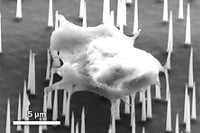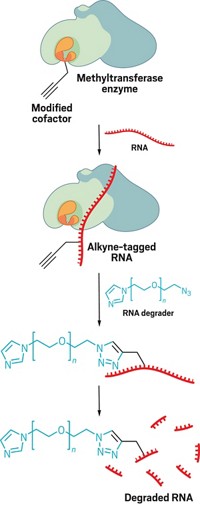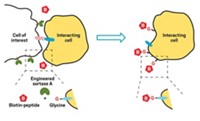Advertisement
Grab your lab coat. Let's get started
Welcome!
Welcome!
Create an account below to get 6 C&EN articles per month, receive newsletters and more - all free.
It seems this is your first time logging in online. Please enter the following information to continue.
As an ACS member you automatically get access to this site. All we need is few more details to create your reading experience.
Not you? Sign in with a different account.
Not you? Sign in with a different account.
ERROR 1
ERROR 1
ERROR 2
ERROR 2
ERROR 2
ERROR 2
ERROR 2
Password and Confirm password must match.
If you have an ACS member number, please enter it here so we can link this account to your membership. (optional)
ERROR 2
ACS values your privacy. By submitting your information, you are gaining access to C&EN and subscribing to our weekly newsletter. We use the information you provide to make your reading experience better, and we will never sell your data to third party members.
Biological Chemistry
Identifying Modified Cells
Molecular Biology: Technique tags and enriches cells genetically altered by nucleases
by Stu Borman
October 17, 2011
| A version of this story appeared in
Volume 89, Issue 42

A new technique identifies and enriches cells whose genomes have been modified by custom-designed nucleases. The method could promote the use of nucleases to tweak genomes for various applications—for example, to study the roles of specific genes and to develop gene therapies.
Zinc finger nucleases and transcription-activator-like effector nucleases customized to target specific genes are available commercially and can also be designed by researchers in their laboratories. They bind and cleave specific gene sequences in cells, causing the genes to be disabled or modified.
A key challenge in using nucleases is that some modify only a small fraction of cells, making it difficult to run experiments. Previous methods to enrich altered cells are used only infrequently.
Now, a South Korean team has developed a simple and convenient method to tag nuclease-modified cells fluorescently, making it possible to enrich them up to 92-fold (Nat. Methods, DOI: 10.1038/nmeth.1733). The team was led by assistant professor of biomedical science and engineering Hyongbum Kim of Hanyang University, in Seoul, and associate professor of chemistry Jin-Soo Kim of Seoul National University.
The technique involves adding circular DNAs known as plasmids to cells that are to be modified by nucleases. The plasmids contain a copy of the gene targeted by the nucleases and genes for a red and green fluorescent fusion protein. If the targeted sequence is modified by nucleases, the fluorescent fusion protein is expressed. Cells exhibiting the glow from that plasmid protein can then be recognized and separated by flow cytometry.
The glow appears only when the target gene is modified in the plasmid, not in the genome. But the target gene is changed at the same time in both locations frequently enough that the technique works well, enabling genomically altered cells to be enriched substantially, albeit not completely.
“The technique is clever and should be broadly applicable for modifying genes in cultured cells,” comments John H. Wilson, a specialist in gene therapy at Baylor College of Medicine. “It is quick and easy and could be used by anyone. Perhaps it might allow less efficient nucleases to become more useful or might prove beneficial in cells in which even ‘good’ nucleases don’t work well.”
Carlos F. Barbas III of Scripps Research Institute, a specialist in zinc finger nucleases, notes that the marker technique is “traceless.” Other enrichment methods “introduce another gene that needs to be subsequently removed from cells, so those approaches leave their footprints in the genome, whereas this one does not,” he says. “It has some real advantages, and I think many labs will use it.”
The customized reporter plasmid technology is available commercially from ToolGen, in Seoul, a company cofounded by Jin-Soo Kim.





Join the conversation
Contact the reporter
Submit a Letter to the Editor for publication
Engage with us on Twitter